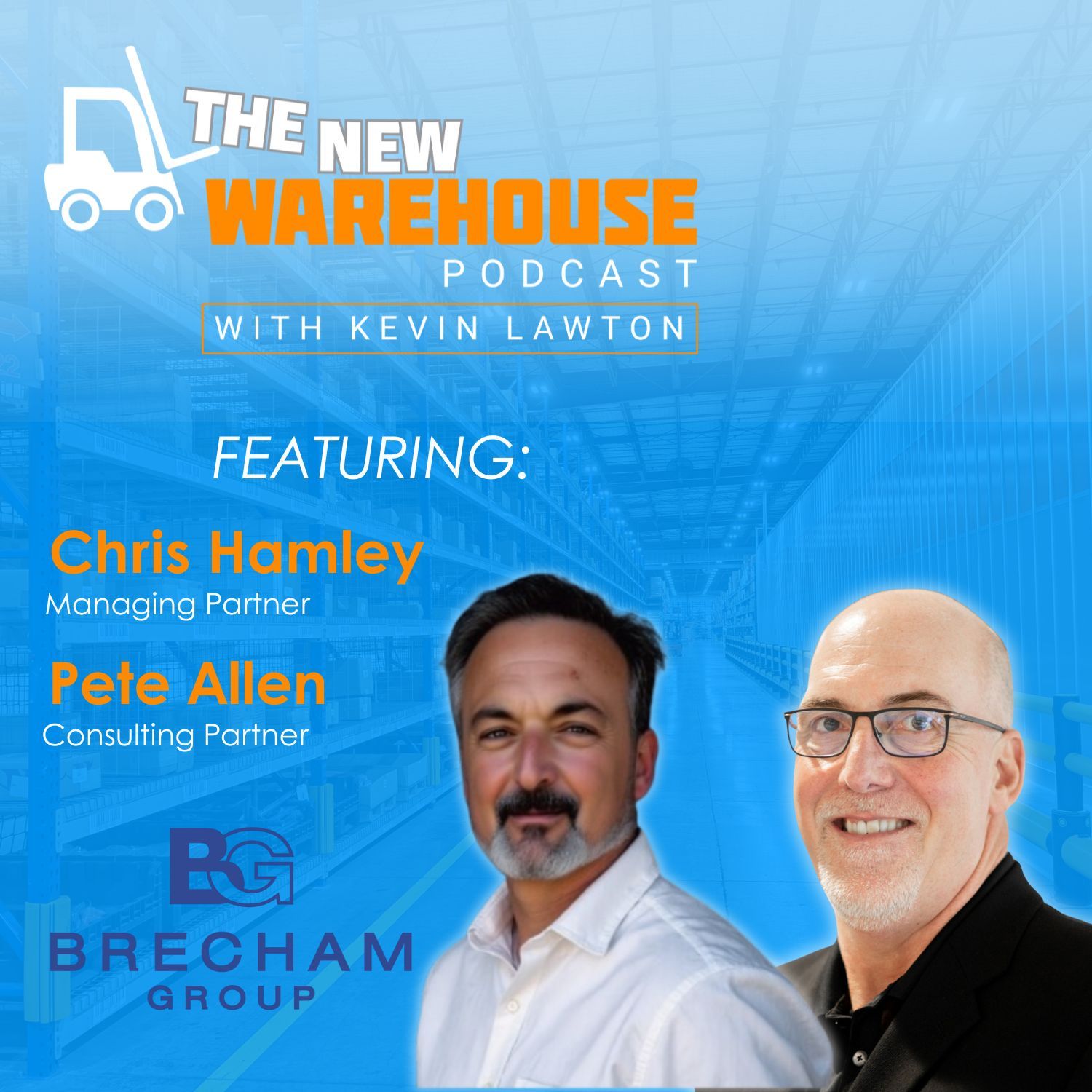
Operational Turnarounds in Warehousing: Making Operations Suck Less
When it comes to improving warehouse performance, Chris Hamley, Managing Partner of The Brecham Group, believes in keeping things simple: make operations suck less. In this episode of The New Warehouse Podcast, Kevin chats with both Chris Hamley and Pete Allen, a returning guest and now one of the newest members of The Brecham Group.
Together, they explore what that mantra truly means and how it shapes the firm’s approach to operational turnarounds in warehousing. This episode blends real-world lessons, cultural insight, and practical advice from two leaders who have spent their careers on the warehouse floor.
Translating Between Operations and Engineering
Chris founded The Brecham Group after years spent watching operations and engineering teams talk around each other. He noticed that most problems weren’t complex—they are misunderstood. “We use the same words, but we mean very different things most of the time,” he explained.
His solution was to build a team of experienced operators and engineers who could bridge those communication gaps. That philosophy became the foundation of The Brecham Group’s approach to operational turnarounds in warehousing. It also inspired the company’s signature motto. “ I’m gonna ask you for that one thing you’re gonna do overnight or for tomorrow. That’s gonna make it suck less. So that became our mantra of ‘Suck Less,’ and it’s really just about continuous improvement. It’s about how I take action immediately to go make things a little bit better.” The idea is to focus on quick, tangible improvements instead of chasing perfect answers.
Pete Allen shared that this mindset is what drew him to the firm. Instead of theoretical consultants, The Brecham Group consists of former DC leaders and operators. Their experience, he said, enables them to pinpoint issues and drive measurable change more quickly than traditional consulting firms.
Inside a Warehouse Turnaround
When operations start to slip, The Brecham Group steps in to stabilize performance before pursuing transformation. Chris calls this the “triage” phase, where the first goal is to stop the immediate pain. “Sometimes it depends on the degree of disarray,” he said. “The number one thing we tell people in that environment is stop—just stop doing whatever the bad things are that you’re doing now.”
Once stability returns, accountability becomes the focus. “We have to teach that the entire organization and every level in the organization has some accountability and expectation of what they go do every day,” Chris explained. That clarity, he said, is what allows long-term improvement to take hold.
Pete pointed out that small operational signals often reveal larger issues. For example, if indirect labor exceeds 20 percent, it’s a sign that performance or culture may be slipping. Even simple things like a messy floor or quiet staff tell the story. “I’ve never walked through a well-run operation that didn’t look like it was a well-run operation,” Chris said. Details like organization, engagement, and cleanliness reflect how much a team cares—and how well its leaders are leading.
Balancing Automation with Operational Readiness
Automation remains one of the biggest opportunities in warehouse operations, but both guests warned that it’s not a magic fix. Pete noted, “A lot of companies are looking at automation now. They see the ROIs, put it in, and magic didn’t happen.”
Chris agreed, emphasizing that automation only performs as well as the operation behind it. “If we’re only achieving 50 or 60 percent of our building’s potential now, putting in a new tool isn’t magically going to make us better as operators.” Success depends on readiness—strong processes, analytics, and disciplined leadership.
“If we have a highly volatile environment…the processes may not be consistent or mature, and consequently, it’s difficult to automate,” Chris said. That’s why The Brecham Group treats automation as part of broader operational turnarounds in warehousing, not the entire solution.
Pete added that automation works best when it addresses safety and consistency. “There are a lot of dangerous jobs that are repetitive or involve heavy lifting. Those are the places I look for first to automate because they’re more likely to be adopted and have success.”
Key Takeaways on Operational Turnarounds in Warehousing
- Small steps drive significant change. Continuous improvement begins with one action that makes tomorrow better.
- Communication is the first fix. Many warehouse challenges stem from language gaps between teams, rather than a lack of strategy.
- Accountability fuels turnarounds. Every level of the organization must know, measure, and own its performance.
- Details reflect culture. Clean operations and engaged employees indicate strong leadership and discipline.
- Automation readiness is critical. Technology only works when the underlying processes and people are stable.
Listen to the episode below and leave your thoughts in the comments.
Guest Information
For more information on Brecham Group, click here.
To connect with Chris Hamley on LinkedIn, click here.
To connect with Pete Allen on LinkedIn, click here.
Want to learn more about operational turnarounds in warehousing? Check out the podcasts below.
621: Harnessing Technology to Advance Cold Storage Operations at Lineage
618: Optimizing Warehouse Operations with AI and Digital Twins
548: Dimensioning Insights – Enhancing Logistics and Operations
